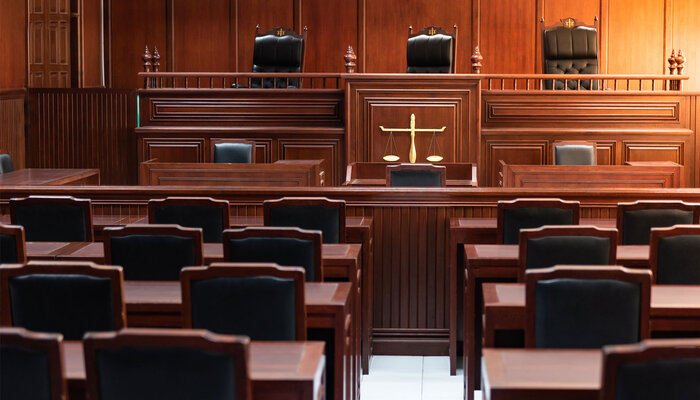Methodology and Acknowledgments
Brennan Center researchers analyzed crime data collected by the Council on Criminal Justice for its year-end 2023 report on crime trends. The sample of 38 cities is not necessarily representative of national trends. Data for aggravated assault, larceny, and homicide were available for 25, 32, and 30 of the 38 cities, respectively. Within each charge type, city baselines were determined by their average rates across 2018 to account for differences in seasonal swings.
We categorized prosecutors according to an analysis of published literature. There are three recent papers that code whether prosecutors are “progressive”: Amanda Agan, Jennifer L. Doleac, and Anna Harvey, “Prosecutorial Reform and Local Crime Rates,” Law & Economics Center at George Mason University Scalia Law School Research Paper Series, No. 22–011 (October 2021); Nick Petersen, Ojmarrh Mitchell, and Shi Yan, “Do Progressive Prosecutors Increase Crime? A Quasi-Experimental Analysis of Crime Rates in the 100 Largest Counties, 2000–2020,” Criminology & Public Policy 23, no. 2 (May 2024): 459–490; and Thomas P. Hogan, “De-prosecution and Death: A Synthetic Control Analysis of the Impact of De-prosecution on Homicides,” Criminology & Public Policy 21, no. 3 (August 2022): 489–534. To determine our sample of pro-reform prosecutors, we selected only those prosecutors who were unanimously recognized in these papers as pro-reform (see below for list).
The comparison group for figures 1–3 comprises all prosecutors in our dataset who did not receive unanimous recognition as pro-reform in the recent studies. Comparison groups for figures 4–9 were composed by selecting comparison cities whose aggregated trends matched pre-treatment trends for each pro-reform prosecutor city. As a result, prosecutors may have enacted some pro-reform policies and still be placed in the comparison group. To check for robustness, researchers tested alternative coding rules. Neither recategorizing individual cities (“leave-one-out”) nor testing non-unanimous-recognition rules fundamentally changes the findings of this analysis. Details and results of these checks are provided in the published Appendix.
In some cases, a jurisdiction had a pro-reform prosecutor for only part of the sample period. If a city was covered by a pro-reform prosecutor for 54 of 72 months (75 percent) or more, it was coded as a pro-reform jurisdiction; for 18 of 72 months (25 percent) or less, it was coded as a control jurisdiction; and for 19–53 of 72 months, it was dropped from the main analysis sample. Austin, Boston, and Los Angeles were dropped for this reason. Ninety percent of city-months in the main pro-reform sample had a pro-reform prosecutor in office.
Additionally, most prosecutors are elected at the county level. Since data was available by city, researchers matched each city to its nearest county to assign a prosecutor. In cases where cities overlapped multiple counties, the county containing the plurality of the city’s residents was chosen.
For figures 1–3, the pro-reform prosecutor jurisdictions are Baltimore, Chicago, Denver, Philadelphia, San Francisco, Seattle, and St. Louis. The full list of comparison prosecutor jurisdictions includes Arlington (TX), Atlanta, Buffalo (NY), Chandler (AZ), Charlotte (NC), Chattanooga (TN), Cincinnati, Colorado Springs (CO), Dallas, Detroit, Lincoln (NE), Little Rock (AR), Memphis (TN), Minneapolis, Nashville (TN), New York City (all five boroughs), Norfolk (VA), Omaha (NE), Phoenix, Raleigh (NC), Richmond (VA), Rochester (NY), St. Paul (MN), St. Petersburg (FL), Syracuse (NY), and Washington, DC. For each charge, a small number of cities were dropped due to inadequate data availability.
For figures 4–9, researchers identified smaller comparison groups of three or four comparison cities by matching aggregated trends to pre-inauguration trends for the jurisdictions that elected a pro-reform prosecutor midway through the sample period. This matching serves only as a benchmark to illustrate how post-inauguration trends could have looked, given pre-inauguration trends.
For their review and guidance, we thank Mona Sahaf, director of Vera’s Reshaping Prosecution Initiative; Andrew Taylor, senior research associate with Vera’s Reshaping Prosecution Initiative; and Rachel Marshall, director of the Institute for Innovation in Prosecution at John Jay College. We also thank Ben Nyblade, Josy Hahn, Ruby Nidiry, and Josh Bell for their research and writing support and Maris Mapolski for her work fact-checking this analysis.







